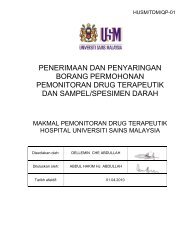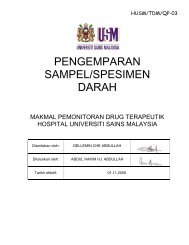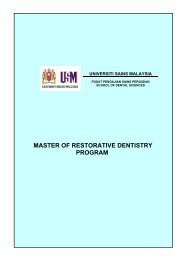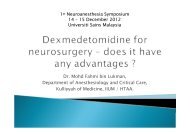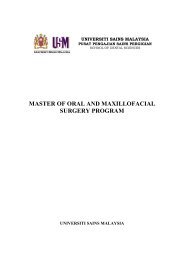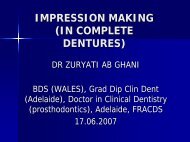Vol 11-R2- Eyelid
Vol 11-R2- Eyelid
Vol 11-R2- Eyelid
Create successful ePaper yourself
Turn your PDF publications into a flip-book with our unique Google optimized e-Paper software.
SRPS • <strong>Vol</strong>ume <strong>11</strong> • Issue <strong>R2</strong> • 2010<br />
Medial Canthal Defects<br />
Defects of the medial canthus resulting from<br />
tumor excision are commonly encountered. They<br />
are second in frequency to lower eyelid defects.<br />
Proper repair of the defects is essential to restore<br />
functionality to the eyelids and to achieve an<br />
aesthetic result to eyelid reconstructive surgery. If<br />
not appropriately addressed, the defects can lead<br />
to life-long symptoms of tearing, foreign body<br />
sensation, and poor cosmesis. Appropriateness<br />
of the repair techniques depends on the type,<br />
size, and depth of the defect and the health of<br />
the surrounding tissues. Most importantly, a<br />
combination of techniques might be necessary to<br />
achieve the most desirable surgical outcome.<br />
Glabellar Flaps<br />
Glabellar flaps are commonly used to repair<br />
medial canthal defects. When properly created,<br />
the flaps can be effective. Turgut et al. 134 noted<br />
that a traditional glabellar flap entails creating an<br />
inverted V in the glabellar region, which is then<br />
undermined and rotated to close the medial canthal<br />
defect. Closure of the resultant wound converts<br />
the inverted V to an inverted Y (Fig. 19). The size<br />
of the flaps depends on the size of the defects<br />
and can be enough to cover a full range of medial<br />
canthal defects. Glabellar flaps offer advantages to<br />
other flaps in the region. They are relatively simple<br />
and can cover deep defects. They have sufficient<br />
blood supply from the subdermal plexus and the<br />
supratrochlear vessels. 134<br />
One disadvantage to this technique is that<br />
it tends to draw the eyebrows closer together.<br />
Meadows and Manners 135 proposed a simple<br />
modification. With the modified technique, the<br />
glabellar flap is raised and rotated to cover the<br />
defect, as described for the classic technique. The<br />
redundant skin that results from transposing the<br />
flap is then cut away and used to help close the<br />
resultant Y-shaped wound, maintaining the normal<br />
spacing of the eyebrows (Fig. 20).<br />
Another modification of the traditional<br />
glabellar flap that helps to avoid the “bulky”<br />
appearance in the medial canthal region and the<br />
34<br />
drawn-together brows is the super thinned inferior<br />
pedicled glabellar flap described by Emson and<br />
Benlier. 136 With that technique, the glabellar<br />
flap is raised, as classically described. 137,138 Once<br />
the forehead wound superior to the eyebrow is<br />
closed, the frontalis muscle and subcutaneous fat<br />
are removed from the flap, leaving the axial blood<br />
vessels. In their series of eight patients, Emson<br />
and Benlier found that satisfactory cosmesis was<br />
achieved in all, and the normal inter-brow distance<br />
was maintained.<br />
Figure 19. Glabellar V-Y flap. Illustration on the top depicts the<br />
medial canthal defect with an inverted V originating from the<br />
apex of the defect. Incision and rotation of the flap into the<br />
defect result in an inverted Y as depicted in the illustration on<br />
the bottom.



